Chapter 10. This is the Modern World
10.16 Sport and Leisure in Post-Confederation Canada
Robin Anderson, Department of History, University of the Fraser Valley
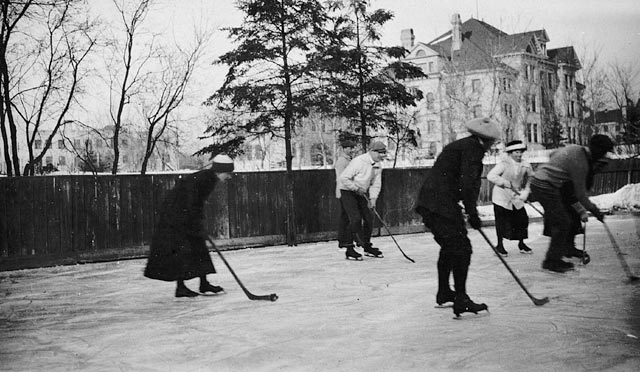
The story of sport and leisure since the mid-19th century has been shaped by many factors, but three historical processes stand out in particular. The first is social hegemony in sport, the process by which dominant groups define the possibilities and limits on sport, leaving outlier groups having to struggle for inclusion. The second is fan identification and representation, the process in which a sport grows from a haphazard set of localized experiences to a phenomenon that fuels powerful allegiances to city, region, and nation. The third is commodification, the process of turning what originally was an informal and voluntary set of sport and leisure practices into a thoroughly commodified cultural marketplace. We will briefly look at each of these historical processes next.
Social Hegemony in Sport
As with most cultural activities, sport and leisure in the 19th and 20th centuries reflected the wider patterns of existence, social hierarchy, and class behaviours of Canadians. While human societies have always displayed a desire for play, organized sport with its emphasis on rational outcomes and fair play began in Great Britain in the late 18th century and was exported to British North America in the early 19th century as an extension of the leisure activities of the newly arrived British middle-class. Most historians agree that Montreal’s Anglophone middle-class men defined many of the enduring structures and practices of organized sport across Canada by the middle decades of the 19th century, including drafting the first rules of play, establishing the standard playing surfaces and equipment, creating the first sport organizations, leagues and events, and articulating a set of middle-class beliefs about the social and personal value of organized sport and leisure. Their vision of appropriate sport was a limited one but one that lined up closely in its broad outlines with similar developments in Europe and the United States.
While this relatively small group of sports-minded men had the money, leisure time, and social influence to define much of the physical activity in the 19th century, less powerful groups were still able to play their games within the nooks and crannies of rural and urban Canada. For instance, many of Canada’s Aboriginal peoples continued to play their traditional games, although some of these, like the richly complex and multipurpose Iroquoian stick and ball game Tewaarathon, came under a re-forming process in the mid-19th century to become the standardized and rationalized sport lacrosse to mimic other contained European field games. Ironically, many eastern-Canadian Aboriginal communities embraced the simplified European game of lacrosse and used their superior fitness and skills to regularly crush their white opponents. Other non-Anglo groups, including eastern European and Asian immigrants in the late 19th century, faced similar challenges to maintain their sport and leisure practices in the face of the dominant sport culture. And, while middle-class male enthusiasts refined the game of ice hockey, informal varieties of shinny (ice hockey) continued to be played on frozen ponds by rural and working class Canadians.

Organized sport was also designed in the 19th century as something men did, and was defined as a training ground for appropriate manhood. The masculinizing aims of sport shifted over time to reflect changes in the dominant form of manhood, but the attachment of sport to men has always been its central feature. This had, and still has, the effect of alienating some men who did not identify with the cultural messages around sport. And in much greater numbers, women were overtly excluded from most organized sports. By the late 19th century, however, women began to infiltrate and eventually demand equal access and resources within sport. The 1920s was a kind of golden decade for female athletes; high-profile Olympians Fanny “Bobbie” Rosenfeld (1904-69), Myrtle Cook (1902-85), and others simply represented the pinnacle of what were thousands of active women sports participants across the country. But the struggle was not over. Women’s efforts to gain an equal foothold in sport would continue through the 20th century in the face of ideological barriers about appropriate femininity, the supposed limitations on the female body, and overt male resistance. We live in a world today where sport opportunities are still heavily tipped in men’s favour and where media sport culture functions like a virtual man cave.
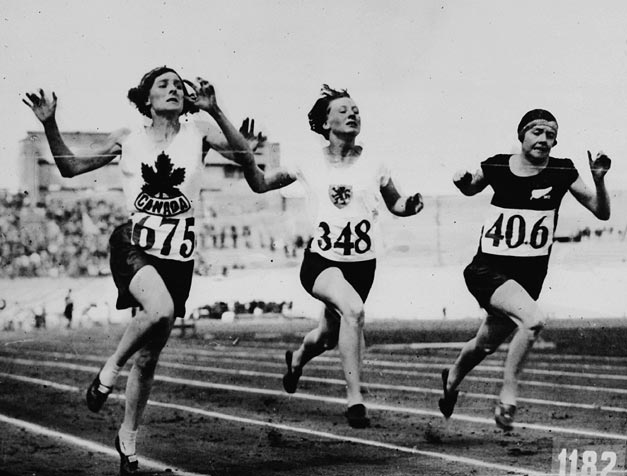
Fan Identification and Representation
Notwithstanding the large crowds for sporting events in ancient Greece and Rome, there was a time more recently when sport fans did not exist — and no one thought they should. Modern organized sport began in the early 19th century as private activities for the benefit of the participants alone. Over time, however, that changed. Sport spectators, known as “fans” today, emerged as an important feature of sporting life and they came to identify local sports teams and high profile athletes as representing them and their community. Sports historians refer to this phenomenon as the representational value of sport, and its emergence parallels the growing commercialization and professionalization of sport, and team sports in particular. Of course, Canada was not isolated from sporting developments elsewhere. In Britain in the early 19th century, many of the enduring patterns of sport identity and representation were established at competing public schools like Eton and Rugby; in the United States, professional baseball quickly took on representational value, following the American Civil War in the 1860s.
By the early 20th century, the notion of “following your team” was firmly established in Canada. And the energy of this identification, combined with the pocketbooks of fans, helped to drive the growth of professional sports. In Vancouver before the 1920s, as in most Canadian cities, three professional team sports — field lacrosse, baseball, and ice hockey — competed for the attention and allegiance of local fans, albeit in more limited regional settings. It was not until after WWII that city-based sport teams began to compete in leagues (such as the Canadian Football League) that were truly national in scope. Even so, the NHL lost three Canadian teams between the wars, as the league expanded into the United States in search of larger markets, and only added one — the Vancouver Canucks — before 1979. By the end of the 20th century, team sport identification had become arguably the most powerful communal attachment and experience that Canadians have. Today, the proliferation of local team jerseys worn as flags to identify fan loyalty, the ubiquitous media saturation that accompanies the games, the huge amounts of capital — both real and emotional — that are expended to support local teams demonstrate the apparently boundless power and appeal of sport representation. Ironically, however, the majority of players on the teams we choose to represent us are not from our communities, and most leave once their playing days are over.
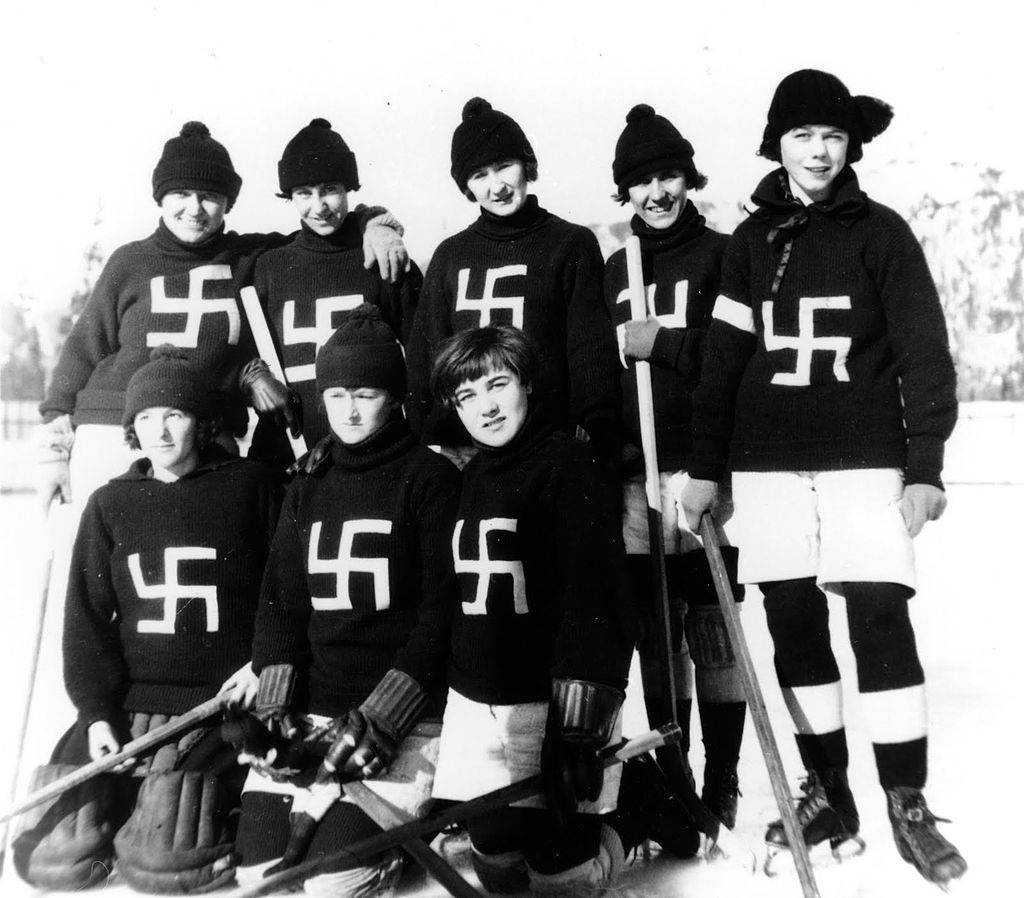
Arguably the most potent representational force in sport is its connection to nationalism. Sport nationalism was slow to develop, and had to wait for the emergence and maturity of international sports organizations in the early 20th century. The modern Olympic Games, which began in 1896, first gave Canadians a taste of sport nationalism during the interwar years, demonstrating that even amateur athletics had the power to capture sports’ representational value. The 1928 Olympic Games produced sports heroes like two-time gold medalist sprinter Percy Williams (1908-82) and the successful women’s track and field team, the so-called “Matchless Six.” After the Second World War, Canada’s Olympic dreams shifted to the Winter Games, seen as more naturally suited to Canada’s northern character, with the success of skater Barbara Ann Scott (1928-2012) in 1948 and skier Nancy Greene (b. 1943) in 1968. Canada would eventually host three Olympic Games, in Montreal (1976), Calgary (1988), and Vancouver (2010), all of which became sites for intense national fervour and the rather dangerous emotional game of placing the fate of the nation in the hands of a very few. Canadians were disappointed most of the time.
Even more than the Olympic Games, Canadian sport nationalism has focused on international hockey. For most of the 20th century, the amateur code that governed most international sports organizations kept Canada’s best professional hockey players out of international competition. For generations, the National Hockey League (NHL) operated in a North American bubble, but with the confidence that the best hockey players in the world were those Canadians who toiled in the NHL. That began to change with the integrative forces of globalization from the 1960s onwards. In 1972, the NHL allowed its players to participate in an eight-game series with the best players from the Soviet Union. The resulting Summit Series and all the drama that the heroic narrative provided, capped by the iconic last-minute goal by Paul Henderson (b. 1943), became the high point of Canadian sports nationalism and, in the minds of Canadians for several decades, the most important national event in the country’s history. The importance of the Summit Series has begun to fade in the collective memory, but hockey nationalism certainly has not. An estimated 16 million Canadians crowded around their television sets or joined strangers in sport bars to watch both the Canadian women’s and men’s hockey teams win the 2010 Olympic gold medal in front of home audiences in Vancouver.
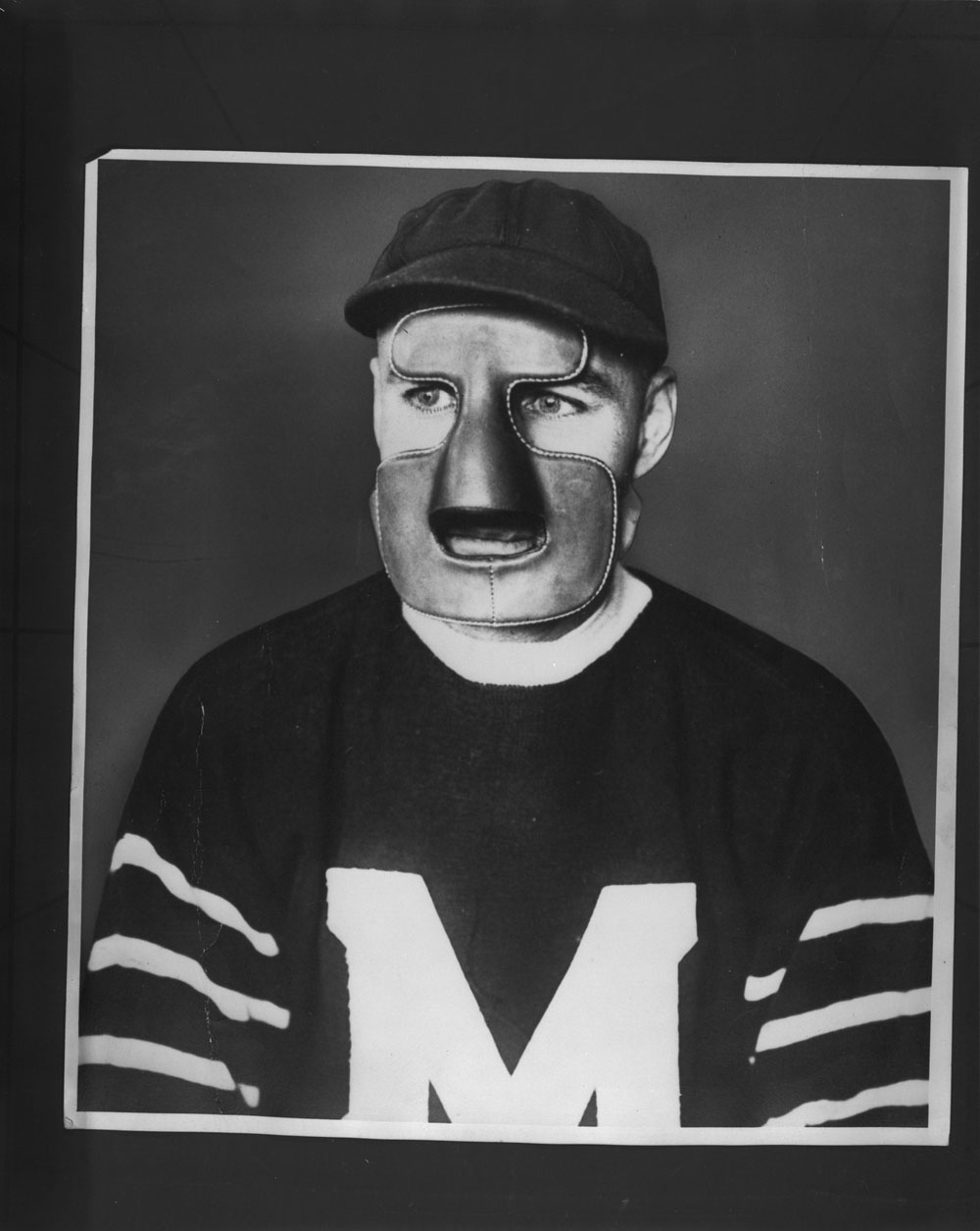
Before Canadians hand their self-identity and emotional welfare over to the performance of hockey players, it would be useful to remember several important points about hockey nationalism. First, no other country in the world regards ice hockey as its most important national sport. In the United States, it is at best the fourth most popular team sport, and several other professional sports such as golf and NASCAR rate much higher in attendance and viewership. When Canada won the two gold medals in Vancouver in 2010, both against American teams, the Americans graciously complimented the Canadians and then went about their business. In some European countries, like Sweden, Finland, and Russia, hockey occupies an important place, but lags far behind football (soccer) and other sports specific to their own sports heritage. Canada has chosen a sport to distinguish itself on the world stage that no one else cares about, at least not nearly as much as Canadians do. Canadian accomplishments on the soccer, rugby, or even cricket pitch would carry far more prestige on the world’s sporting stage.
We should also remember that a sport is an unusual and troubled way to define national character and purpose. Canada is one of the few countries that holds up a game as a definer of what that country is. Some cultural historians and critics have argued that Canada’s lack of coherent unity or any sense of collective values has forced it to embrace an activity as a symbol of its essential nature. Some suggest Canadians are just lazy and wish to avoid the conflicts that would accompany making those important choices. So, instead of choosing specific meaningful ideals that reflect and shape what Canada is as a country — a task that other countries have done — Canadians assign importance to the vagaries of a competitive game that presents conflicting messages to differing audiences, one that is played by a small and diminishing minority of mostly boys and men, and a game whose elite performers and major decision makers choose to work in the United States.
Commodification
The final factor that shaped the evolution of sport and recreation — commodification — is arguably the most important, and was probably unavoidable. The history of sport, after all, did not happen in a bubble, but rather paralleled the evolution of modern capitalism. As such, it has reflected the contours of social and cultural change that accompanied the industrial revolution. So, the initial emergence of organized sport forms in the mid-19th century has everything to do with the rise of industrial enterprise, the growth of wage labour, the expansion and increasing demands of the marketplace, the rapid growth of urban areas, the proliferation of industrial technology (especially advances in transportation), the invention of “leisure time,” and the growing confidence and recreational desires of the middle-class. When we talk about sport commodification, we mean the commercialization of events, which happened early, and the professionalization of players and athletes, which happened later and in some circles with greater controversy.
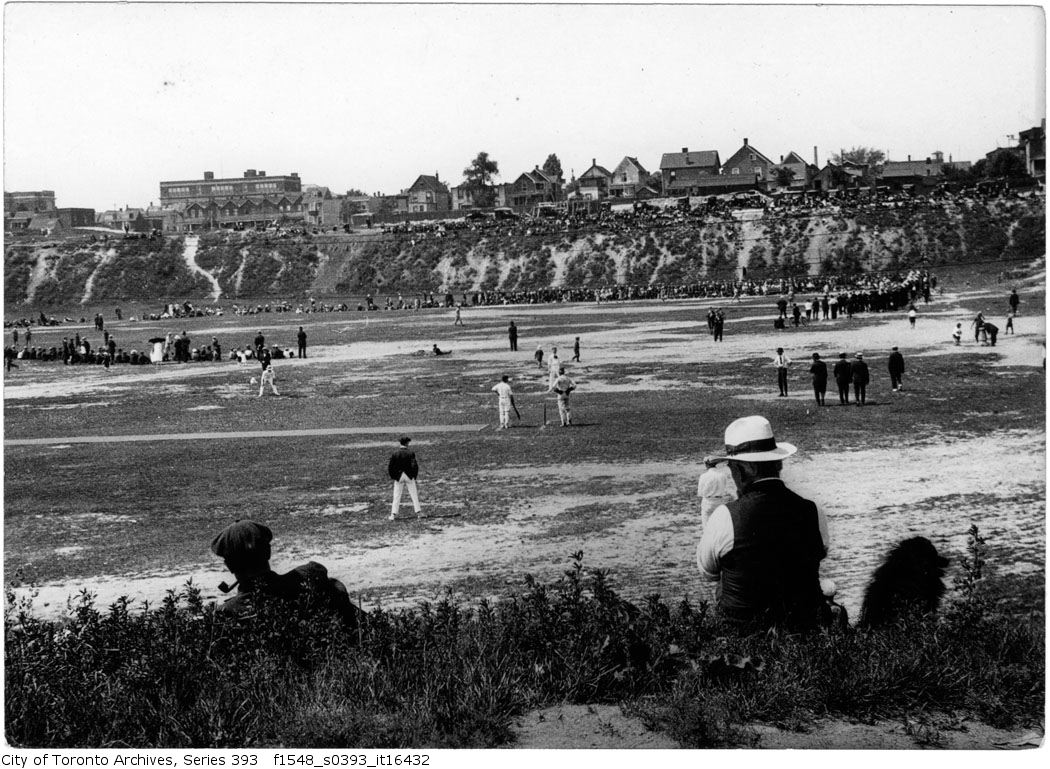
Right from the start, sport was attached to commercial opportunities, as enterprising individuals used athletic and physical activities to generate money. One-time sporting events, including prize-fights, canoe races, impromptu foot races, and strong-man competitions, were a common feature of 19th century Canadian life, and were almost always used as opportunities for gambling. One odd but typical example was the so-called “fat man” races that swept through Western Canada and the United States in the 1860s and 1870s. An advertisement in the Victoria British Colonist newspaper from 1872 gave readers ample notice:
Novel Race: A match has been made between two well-known Fat Men of this town, to run a foot race on the Queen’s birthday for 30 dollars a side. Beacon Hill [Park] will shake to its very base when these two great bodies are set in motion. Timid persons are requested to leave town for the day.[1]
Gambling helped fuel the process of commercialization in many sports in the 19th century. And with this economic energy came sports professionalism, first with paid athletes in individual sports, and then, by the end of the century, with professional rosters in team sports. The best known and certainly most colourful professional athlete in 19th century Canada was the world single-sculls rowing champion Ned Hanlan (1855-1908). Hanlan grew up in a working-class Irish family in the Toronto area and learned to row while helping his father illegally smuggle rum across Lake Ontario. After he mastered the new technology of the single-sculls sliding seat, a skill that was crucial to his singular success, Hanlan went on to dominate the enormously popular rowing competitions in Canada, the United States, and Britain in the 1880s. Hanlan and his backers knew how to milk the entertainment value and gambling opportunities of a close and uncertain outcome, and quite often the consummate showman Hanlan intentionally slowed down to make races appear closer than they actually were.
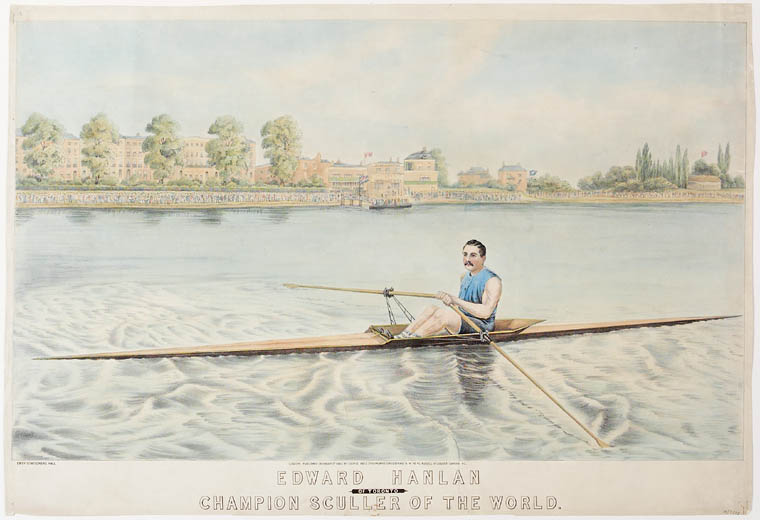
Sport historians are quick to remind us that even the strictest adherents of amateurism in the late 19th and early 20th centuries could not escape the needs of the marketplace, and even encouraged them. For instance, the Montreal Amateur Athletic Association (MAAA), the first and most powerful multisport organization in Canada before WWI, was formed in 1881 by Montreal middle-class sportsmen to pool capital to purchase land and club facilities. If they wanted to stay afloat, the MAAA and other amateur organizations were going to have to come to terms with the cash nexus. Money was needed for facility rentals, park development and the purchase of clubhouses, event expenses (including promotion and advertising), participant rewards and prizes, and the cost of players’ equipment and team accessories. All sports organizations — amateur included — charged gate admission to recover some or all of their related costs.
Amateur organizations like the MAAA were highly critical of professionalized team sports, which they saw as debasing the true spirit of voluntary recreation and the ideals of sport for sport’s sake. The potent forces that came to shape team sports, particularly the representational value of sport, 19th-century civic boosterism, and the overwhelming need to win, led to the practice of hiring the best players. Most major team sports moved incrementally from having the occasional paid player to stocking teams with dedicated professionals. By the early 20th century, most team sports were ignoring the voices of amateurism as they counted paying spectators filing into the ball parks, playing fields, and ice arenas across Canada.

One early example of the possibilities of commodification in team sports was the Pacific Coast Hockey Association (PCHA), a professional hockey operation that began in southwestern British Columbia by Frank and Lester Patrick in 1911. The Patrick brothers are remembered as creative innovators in hockey history, bringing in a slew of rule changes and practices that revolutionized the game, including the forward pass, the blue line, the use of in-play line changes, and the post-season playoff format. However, the PCHA was also a prime example of a fully commodified sports league. The Patricks owned and controlled every team in the PCHA, built state-of-the-art arenas with artificial ice, and moved teams around frequently to maximize revenue. They stocked the league with star players that were lured (some say raided) from the National Hockey Association (NHA), the leading professional hockey league in eastern Canada that would become the National Hockey League (NHL) in 1917. The best known of these star players was Edouard “Newsey” Lalonde (1887-1970) and Fred “Cyclone” Taylor (1884-1979). Centralized team ownership meant that the Patricks could control player salaries and manipulate team rosters to achieve parity in the league, two issues that vex professional leagues today. The stability and public profile of the PCHA forced the NHA into a predictable east-west playoff structure for the Stanley Cup, effectively ending the challenge cup format that was in place since 1893. As a result of the Patricks’ investments, the Vancouver Millionaires were Stanley Cup champions in 1915, winning a best of three series from the Ottawa Senators three games to none. The PCHA’s Seattle Metropolitans would also win the Cup in 1917.
The opportunities for profit in sport increased exponentially in the second half of the 20th century. From the 1960s onwards, Canadians experienced an acceleration of commodification as the marketplace entered every area of life. Sport was part of this process. The revenue streams available to professional sports began to increase with television coverage in the 1960s and the delivery of commercial advertising through sports entertainment. Rising ticket prices to games reflected the higher income levels of certain segments of the Canadian population. Player salaries also rose and soon escalated to keep step with the growing profits available in professional sports leagues. By the 1980s, sport commodification moved beyond television contracts and ticket revenues into retail sales and sponsorship agreements. Today, professional sport is a foundational element of modern capitalism because its emotional appeal is so easily attached to the capitalist marketplace.
The forces of sport commodification would eventually kill amateurism. The Olympic Games, or the “Olympic movement” as advocates prefer to call it, positioned itself early in the 20th century as the global defender of amateur principles. However, the lure of increased revenues for the Games after WWII proved too enticing even for members of the International Olympic Committee (IOC), the appointed officials who governed the organization. What began as relatively small television contracts for the Games in the mid-1950s soon mushroomed in size to reflect profits to be made in media coverage. The IOC added sponsorship agreements to its revenue pool in the 1980s, as giant corporations such as McDonald’s, Coca-Cola, and Visa payed millions of dollars to be official partners for the Games. Once the commercial door was blown open by huge amounts of corporate money, it proved difficult to keep professionals out of the Games and maintain the principles of amateurism. For one, the public demanded to see the best athletes perform, professional or not. To accommodate, in 1988 the IOC allowed the international sports federations that governed each sport to define Olympic participation themselves. Most would eventually choose to abandon the amateur code.
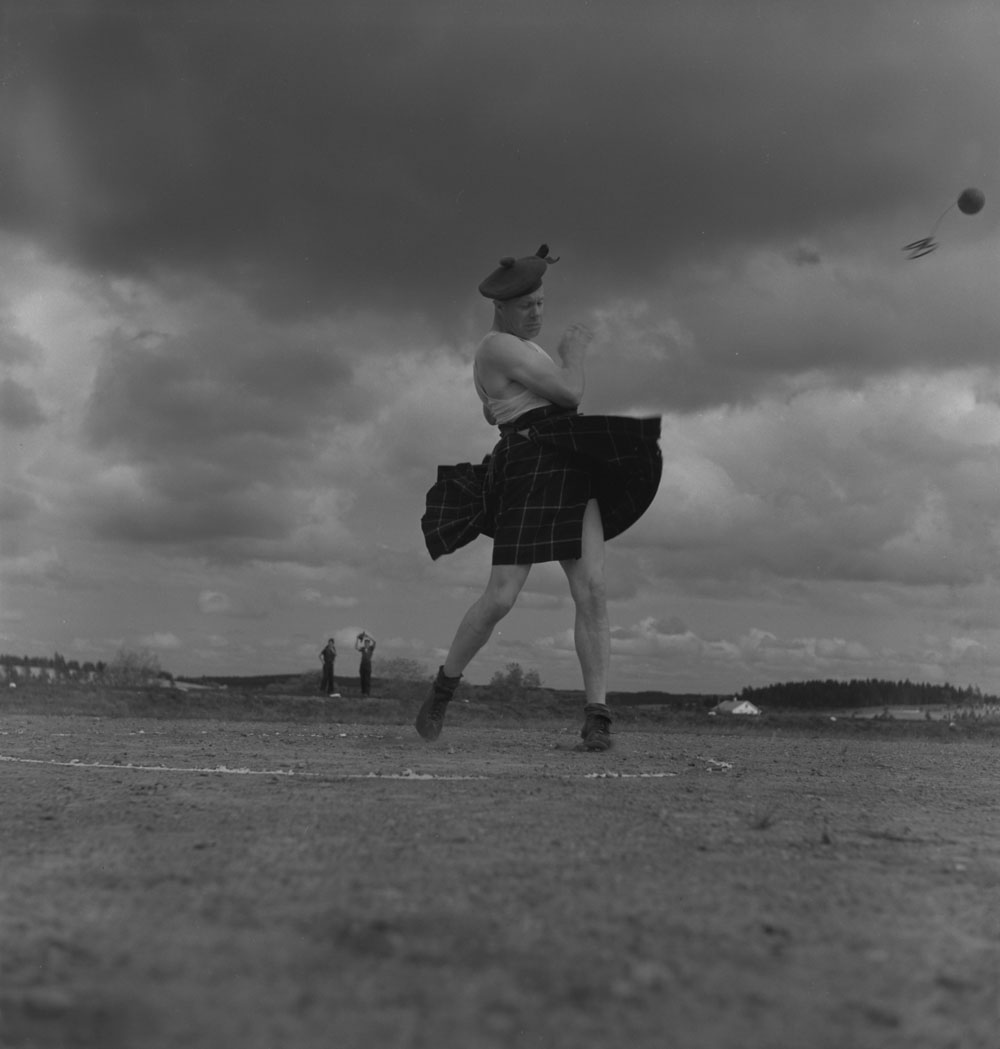
Today, the Olympic Games stand as the quintessential example of a thoroughly commodified sports entity. Its revenues rival the annual income of some countries, its commercial tentacles penetrate every market opportunity imaginable, and its boardroom of lawyers vigilantly polices its trademarks and other marketable symbols. But of course it is not alone. We uncritically admit today that modern sports organizations are businesses, first and foremost, and in so doing we allow them whatever latitude available to pursue their economic goals. However, we usually fail to recognize the underlying context of expansionary capitalism that has moved sport and sport entertainment into the centre of our lives. We also fail to see the gap that has developed between elite professional sports celebrities and the rank-and-file sports fan.
Key Points
- Historians of sport observe that social hegemony works to privilege some activities and marginalize others, which in Canada has meant the middle class definition of appropriate organized games was a racialized and sexualized — white and male — space.
- Spectator sports are historically tied to the notion of the representational value of the games, which is tied to urbanization and the professionalization of playing.
- Canada’s obsession with ice hockey has eclipsed interest in sports with a far greater international cachet.
- Industrialization and urbanization contributed to the emergence of leisure time and the use of disposable income to support sports enterprises. Sports became professionalized and turned into a commodity for sale.
Additional Readings
Bouchier, Nancy. For the Love of the Game: Amateur Sport in Small-Town Ontario. Montreal: McGill-Queen’s University Press, 2003.
Burstyn, Varda. The Rites of Men: Manhood, Politics and the Culture of Sport. Toronto: University of Toronto Press, 1999.
Hall, M. Ann. The Girl and the Game: A History of Women’s Sport in Canada. Toronto: University of Toronto Press, 2002.
Gruneau, Richard and Whitson, David. Hockey Night in Canada: Sports, Identities, and Cultural Politics. Toronto: University of Toronto Press, 1994.
Howell, Colin. Blood, Sweat, and Cheers: Sport and the Making of Modern Canada. Toronto: University of Toronto Press, 2001.
Kidd, Bruce. The Struggle for Canadian Sport. Toronto: University of Toronto Press, 1996.
Morrow, Don and Wamsley, Kevin B. Sport in Canada: A History. 3rd Edition. Toronto: Oxford University Press, 2013.
Poulter, Gillian. “Montreal and its Environs: Imaging a National Landscape, c. 1867-1885” Journal of Canadian Studies 38:3 (2004): 69-100.
Media Attributions
- Hockey, 1919 © H.J. Woodside, Library and Archives Canada (C-079313) is licensed under a Public Domain license
- Caughnawaga Indian Lacrosse players: study of five figures © Library and Archives Canada, Acc. No. R9266-224. Peter Winkworth Collection of Canadiana is licensed under a Public Domain license
- Myrtle Cook of Canada (left) winning a preliminary heat in the women’s 100 metres race at the VIIIth Summer Olympic Games © Library and Archives Canada (PA-150994) is licensed under a Public Domain license
- Fernie Swastikas hockey team, 1922 © Fernie Swastikas is licensed under a Public Domain license
- Clint Benedict, Montreal Maroons © Hockey Hall of Fame, Library and Archives Canada (PA-048898) is licensed under a Public Domain license
- Cricket and baseball – Willowvale Park © Toronto City Archives, Fonds 1548, Series 393, Item 16432 is licensed under a Public Domain license
- Edward (Ned) Hanlan © Library and Archives Canada, Acc. No. R9266-3343. Peter Winkworth Collection of Canadiana is licensed under a Public Domain license
- 1914_Vancouver_Millionaires © Stuart Thomson, City of Vancouver Archives (CVA 99-126) is licensed under a Public Domain license
- Highland Games, Antigonish, Aug. 1940, athlete throwing stone © Ronny Jacques, Library and Archives Canada (MIKAN no. 4315254) is licensed under a Public Domain license
- Ad from the British Colonist (Victoria, 1861), cited in Gary Kingston, "B.C.'s first "sports event" probably a cricket match", Vancouver Sun, (10 November 2009), accessed 13 May 2016, http://www.vancouversun.com/first+sports+event+probably+cricket+match/2207952/story.html. ↵
Influence enjoyed by one social group over all others; dominance in tastes, culture, and values, among other indicators.
In the context of, principally, professional sports, the phenomenon of fan allegiance to a team or player; manifest in the wearing of sports merchandise or loyalty to a team or club, and consciously encouraged by local media.
In the context of the professionalization of sports and leisure, the process of turning what originally was an informal and voluntary set of practices into a commodity to be bought and sold.
In the context of, principally, professional sports, the phenomenon of athletes whose performance is seen by the community and by fans especially as representing the community and its members; applies to local and to national players/teams.
Generally, the creation of exclusive policies that limit entry into a particular business or trade, such as the need for a teaching certificate from a recognized institution in order to become a teacher; in sports, the phenomenon of paying players to play, which moved games and athleticism away from the 19th century ideal of gentlemanly and unpaid (amateur) competition.
In the context of the history of modern sport, refers to athletes who do not accept pay to play; also implies a middle- and upper-middle class ethos of fairplay and a hostility toward professionalism.
Established in 1917 after a dispute among team owners in the National Hockey Association. It was, originally, an all-Canadian league but expanded in 1920 to Boston. Its higher salaries and American market led to the decline and disappearance of other professional leagues and the rise of an effective monopoly by the 1940s.
Created in 1881, a federation of non-professional sports organizations, including bicycling, lacrosse, and ice hockey clubs; argued for a gentlemanly view of athletics, one which built character and community; opposed to the professionalization of sports and games.
One of several early 20th century professional hockey leagues; pioneered use of artificial ice in indoor arenas; merged with the Western Canada Hockey League in 1924.
One of several early 20th century professional hockey leagues and the direct precursor of the National Hockey League.
Established 1894; responsible for the organization and operation of the Olympic Games (both winter and summer versions).

